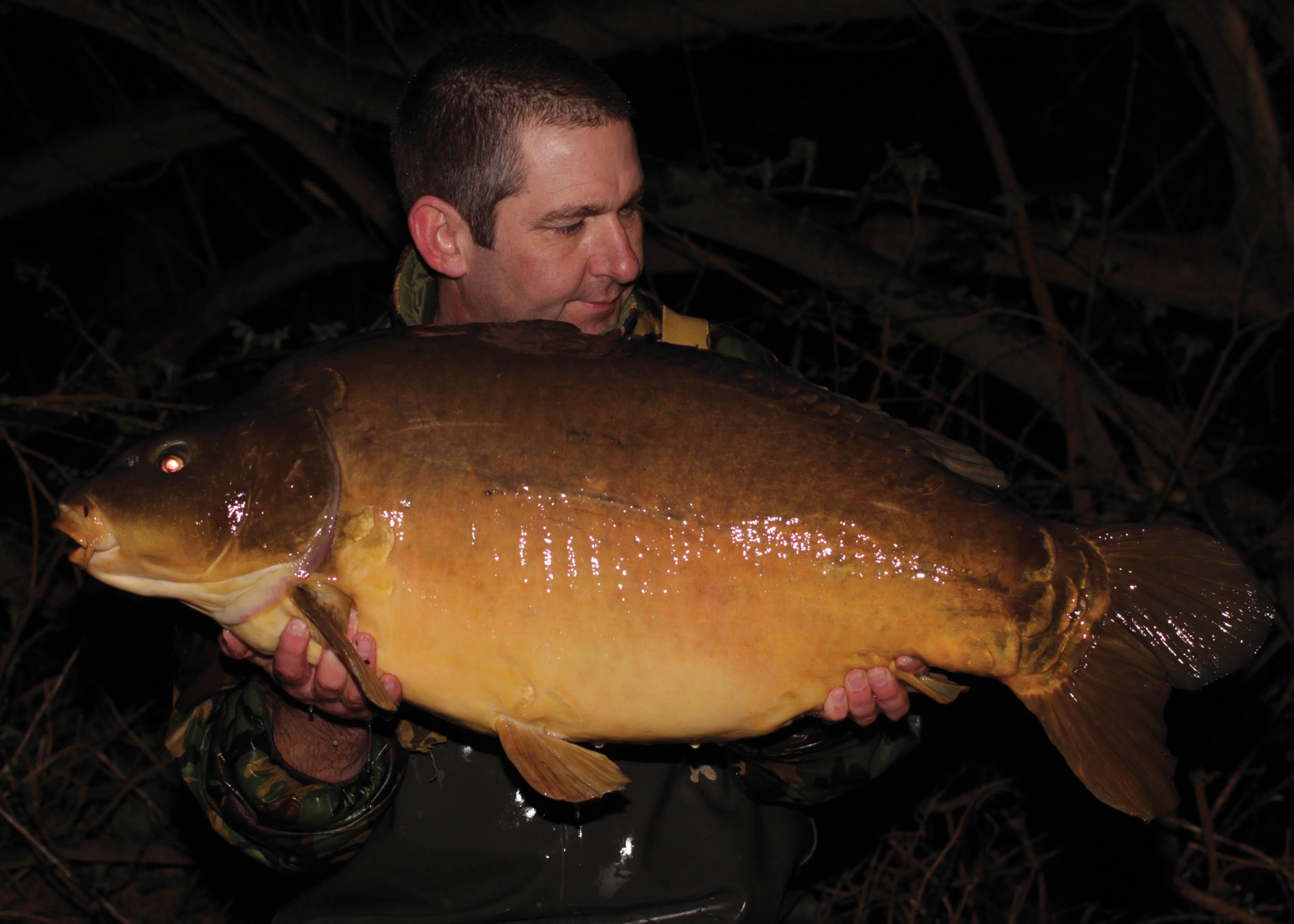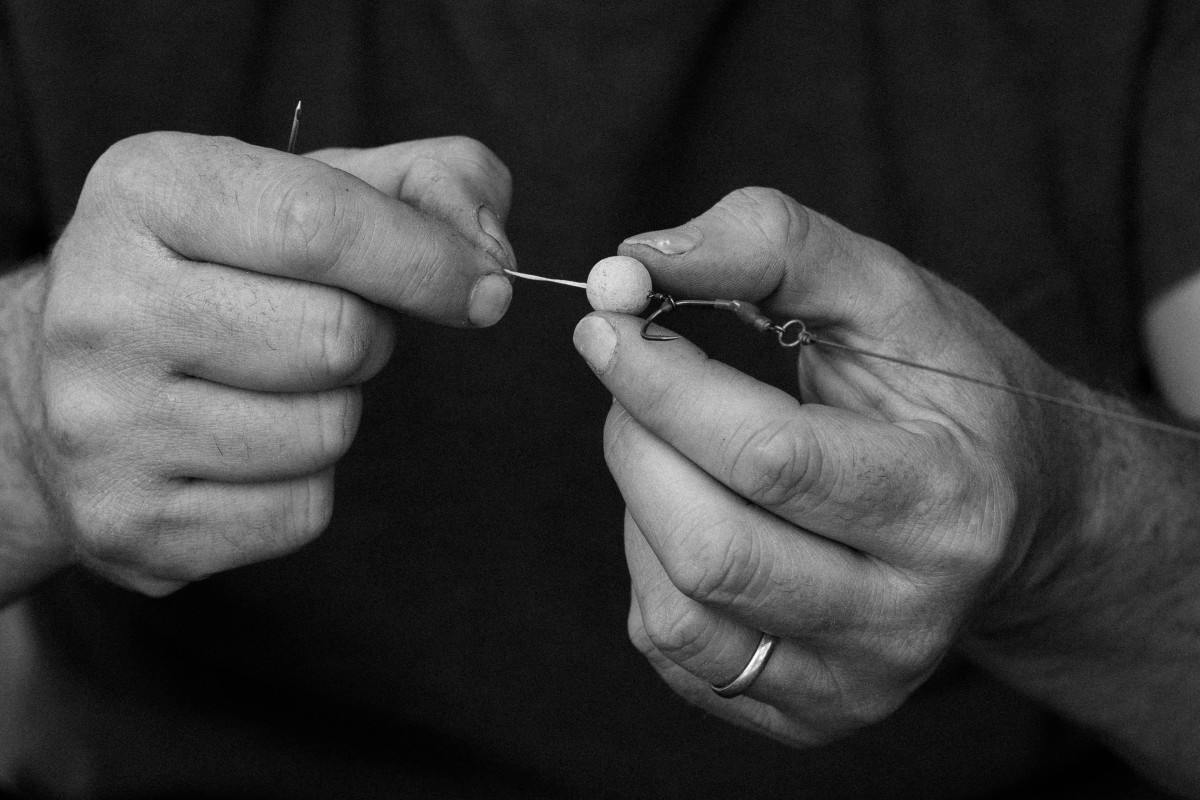
The Great Ronaldo!
There’s a reason why the Ronnie Rig is so popular, and why Lewis Read is its biggest fan…
Some presentations, like ‘God’s own Hinged Stiff Rig’, were just right to start with, the term ‘timeless classic’ justifiably applicable in that case. How long has it been since the new rig on the block, so to speak, was released? It must be at least five or six years now since the Ronnie was ‘outed’… how time flies!
Since those crazy days, there have been more than the usual rig histrionics, but long after the fallout slowly settled, dusting the carp-angling landscape as it did, the Ronnie/Spinner Rig is still there catching loads of carp, and it doesn’t look like it is going to stop doing so anytime soon. That in itself, begs the question why? After taking into account just how many fish have been caught on the presentation, and just how much it has been used, it makes you wonder, doesn’t it?
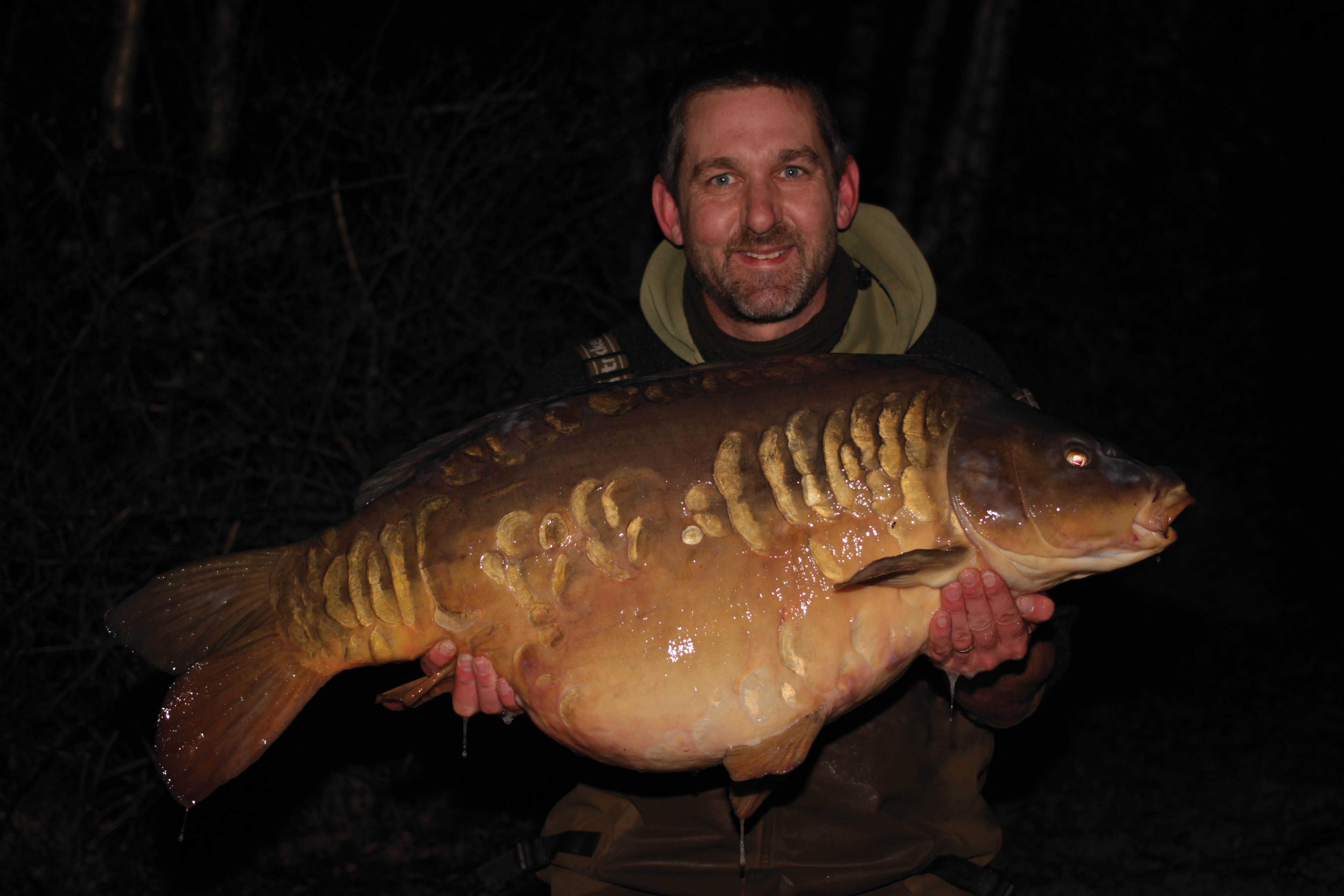
Critical to its success is certainly the fact that the pop-up is fished very low to the lakebed, and with those big bulbous eyes positioned on either side of the carp’s head, it’s unlikely that the bigger fish can visually inspect a hookbait—at least certainly not when they’re on the final approach, shall we say—those big rubbery lips and extendable mouth come closer as a carp tentatively snuffles forward, until the rig wafts inside and… bingo!
There is an element of the hookbait being kept tight to the hook too, so no matter how gingerly the fish creeps in and mouths the hookbait, there is an extremely strong likelihood that the hook point will be down the carp’s mouth far enough and for long enough, for you to have a very good chance of hooking it.
Part of the Ronnie’s popularity must undoubtedly be linked to the ease with which uniform construction can be achieved. There are no tricky knots to learn, bits of line to burn, or curves to form. It’s almost like carpy Meccano, and consequently it’s hard not to put it together correctly! As long as the components you use are reliable what can go wrong? In essence, not a lot.
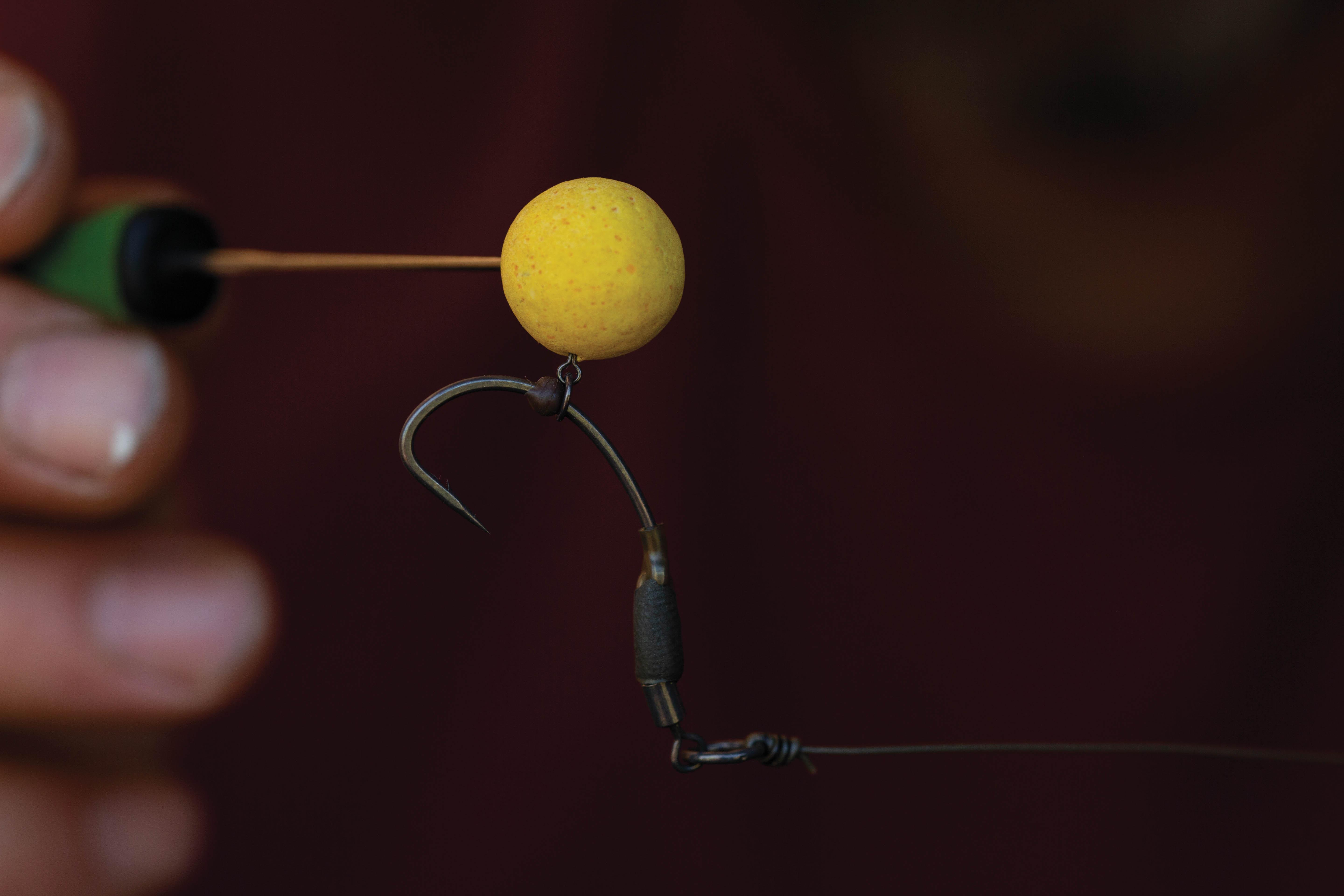
The necessary flexi hook swivel should be reliable and strong, and just as importantly offer minimal resistance to rotation. This is where PTFE-coated swivels inch ahead of standard black-coated components, as the finish ensures that rotation is smooth and slippery, even when twisting under tension. Of course, it’s a relatively small detail and easy to overlook compared to the position of the hook bead, or checking that the hook point is exquisitely and superlatively sharp, but if a small incremental improvement catches you the occasional bonus fish, then it’s a no-brainer!
The original rig, devised by Ronnie and Steve ‘the Apache’ Cliff on Elstow, utilized a very strong, and heavy braid for attaching the hook to the swivel, and to form Slip D-style loop of braid to mount the hookbait onto. How things have changed now quick link swivels allow that join to be made bombproof, and this was an important consideration when we elected to publicize the rig. To be brutally honest, I was a little scared of the potential consequences of poorly tied hooks, held on, perhaps, by just a couple of granny knots. Even if 99 per cent went out tied perfectly, it would still have left a lot of of rigs of questionable strength that could potentially leave a hook in a fish’s mouth—avoidably so. Who says the industry has no morals…?
So in the context of the ‘Metal Micky’ version of the rig, there are really only a few areas related to the construction which need to be covered, as there’s not a lot that can go wrong!
If you consider the sheer volume of instruction and information available related specifically to construction of a Ronnie, it’s hard to understand how it is possible to get it wrong. The slight variations I see are mainly in terms of small issues, such as the position of the hook bead.
In finite terms, the final position of the hook stop is largely dictated by the pattern of hook, the size of hookbait (important!), and the size and type of swivel or hook ring swivel being used to mount the hookbait. If you use a standard small swivel on the hook shank, then the hook stop should probably be positioned a little further up to the bend than would ideally be the case with the ringed version. This is not only because of the extra length of the hook ring swivel, but also because the angle between the hook shank and the standard swivel acts as a lever, literally pushing the hook over and accentuating the aggressive claw action.
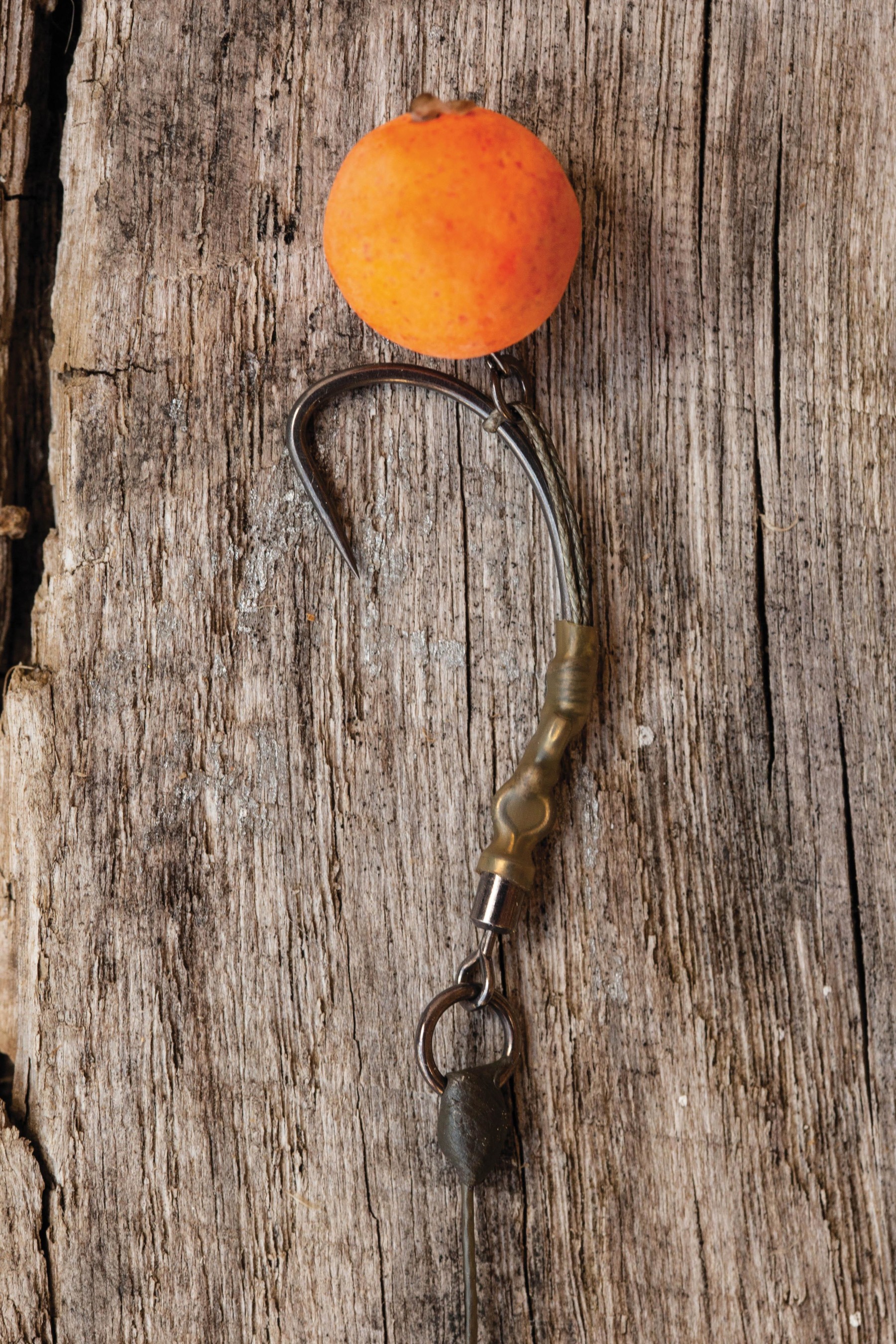
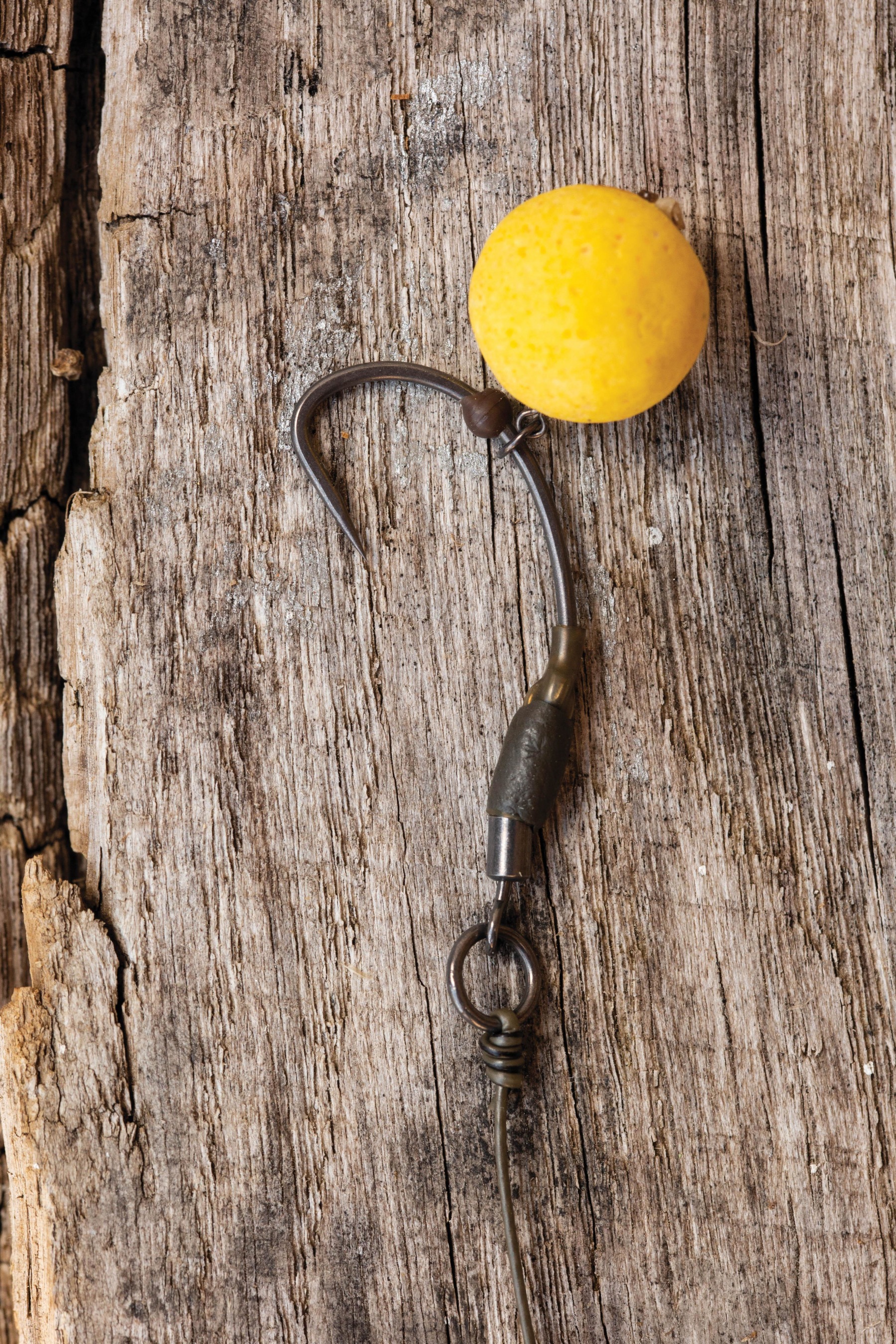
I have always considered the way the Ronnie sits like a claw to be one of its greatest attributes, and quite probably the very reason why the rig seems to remain effective, even once the hookbait is past its prime in terms of buoyancy. Quite honestly, there are hookbaits that I will happily use for Ronnies, but which I wouldn’t dream of putting on a Hinged Stiff Rig or Chod, as I know that within a few hours, the higher hook section will be leaning over like the Tower of Pisa! I’ll happily put one of these on a Ronnie, though, and leave it out for 24 to 36hrs. It seems there is a direct correlation between pop-up height and buoyancy with most rigs, a high pop-up’s rig mechanics requiring more buoyant hookbaits. Come to think of it, I know anglers who catch well using the straight Ronnie with wafters, although personally I prefer the similar mechanics, but more controlled layout of the German and Turbo German Rigs.
Small hookbaits seem to rule—at least if you fish the hookbait close to the hook—and when you play with the rig, it’s clear to see why. Larger hookbaits can impede the rotation and free movement of the hook, so my go-to offerings are 12 or 14mm hookbaits on a lovely size 4 curve shank. It’s a combination which just works, and the small hookbait is helpful if you’re fishing at maximum range, as the reduced air resistance helps add a few valuable feet to your screaming banshee of a long chuck!
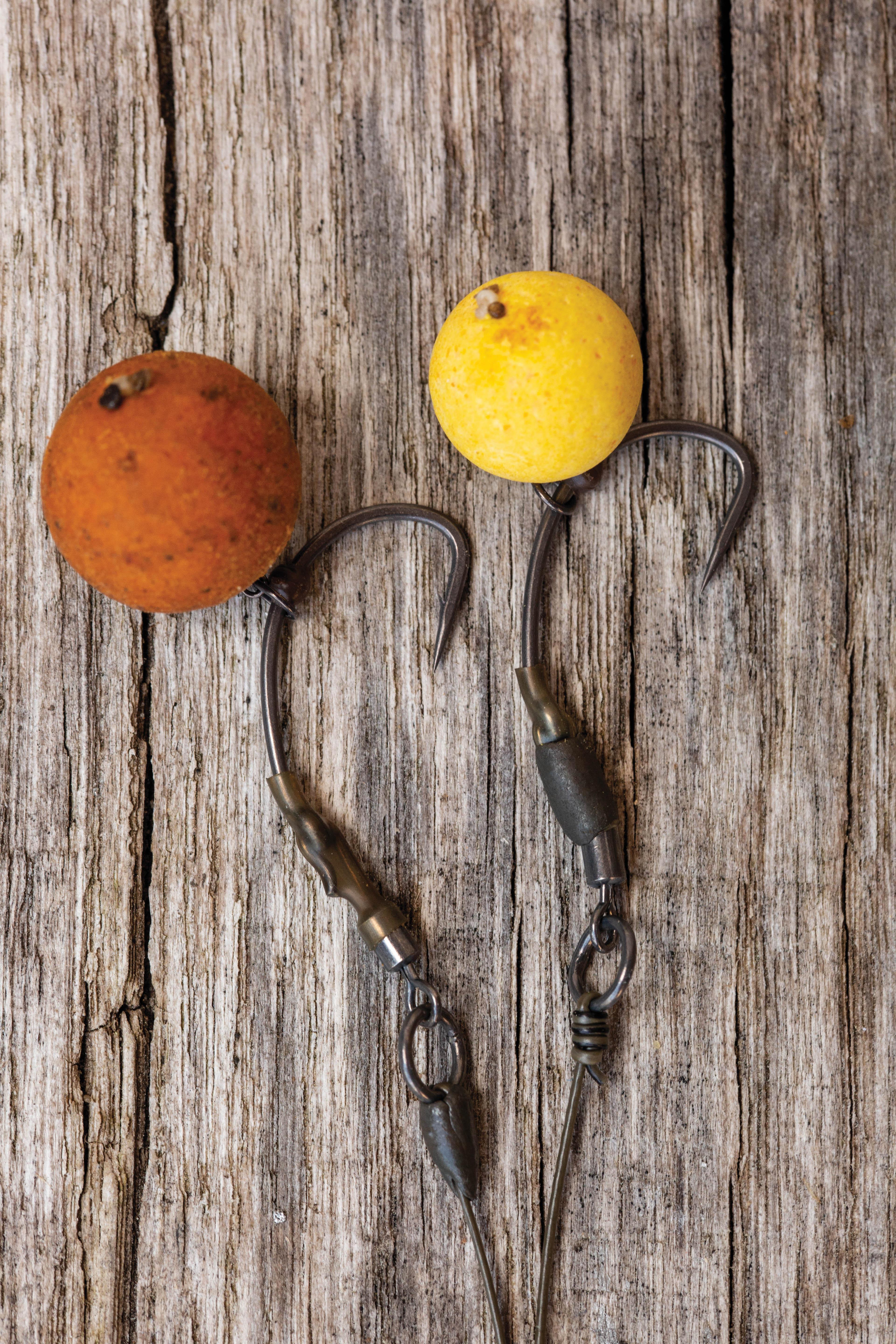
Hooks don’t have to be curve shank patterns. For instance, our Oz loves a beaked point, so in reality you can construct the old Ronnie with almost any hook pattern, as the angle is set with shrink tube. Whatever you choose, I would say go big on hook size if you’re fishing for chunks. If you’re predominantly fishing for fish in the upper-double–mid-twenty bracket, then the general consensus is certainly that dropping down to a size 5 or 6 hook helps create consistently secure hook-holds.
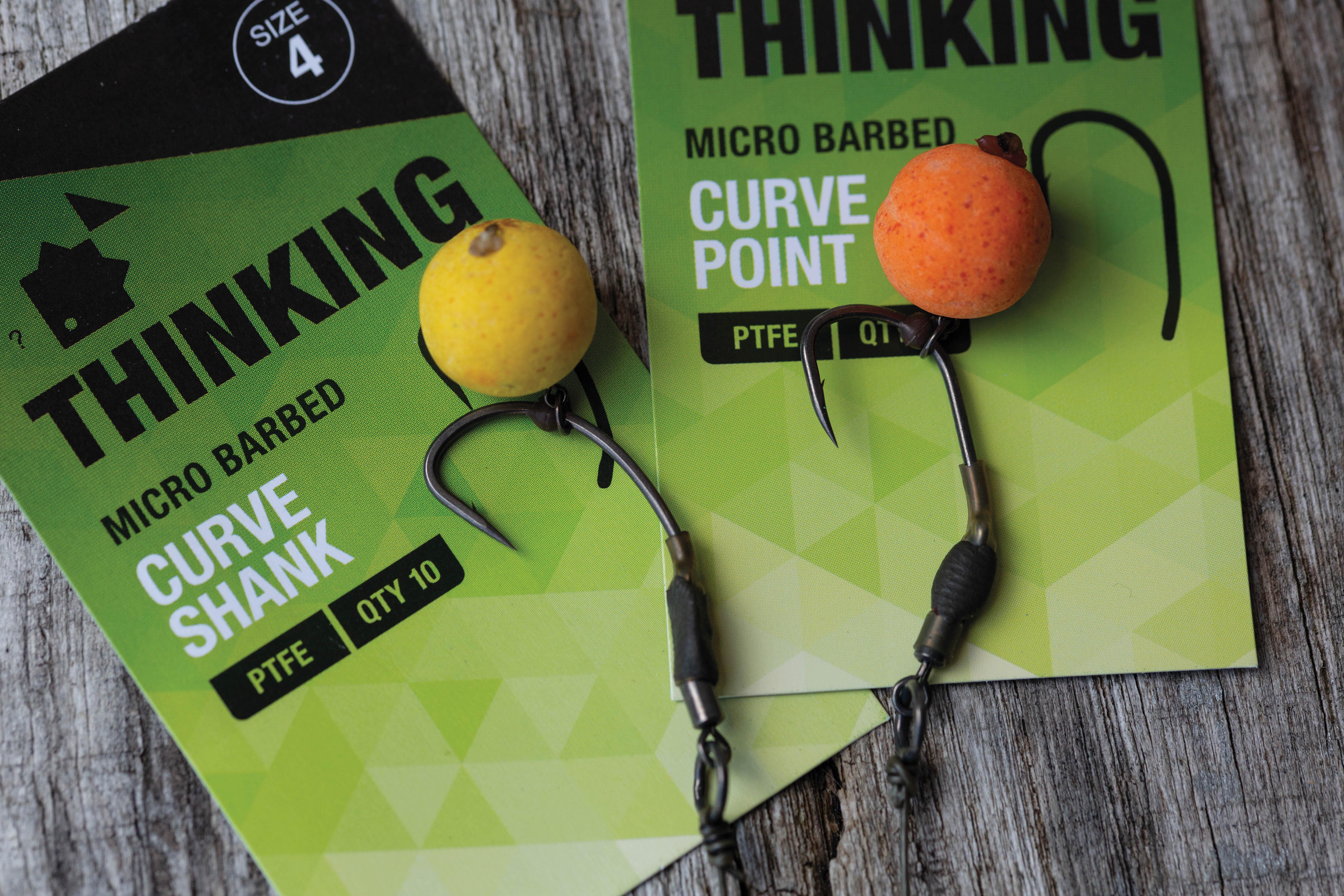
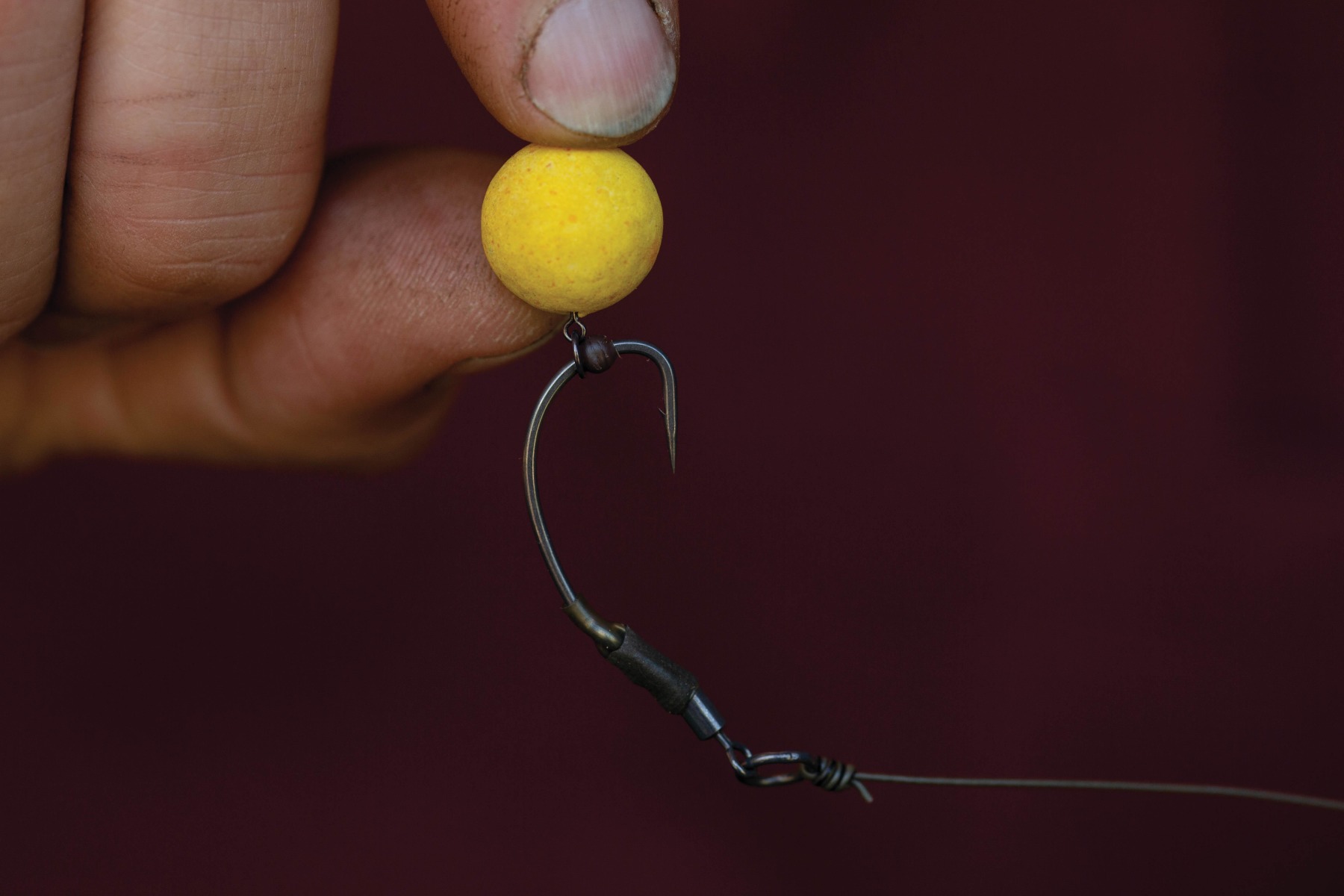
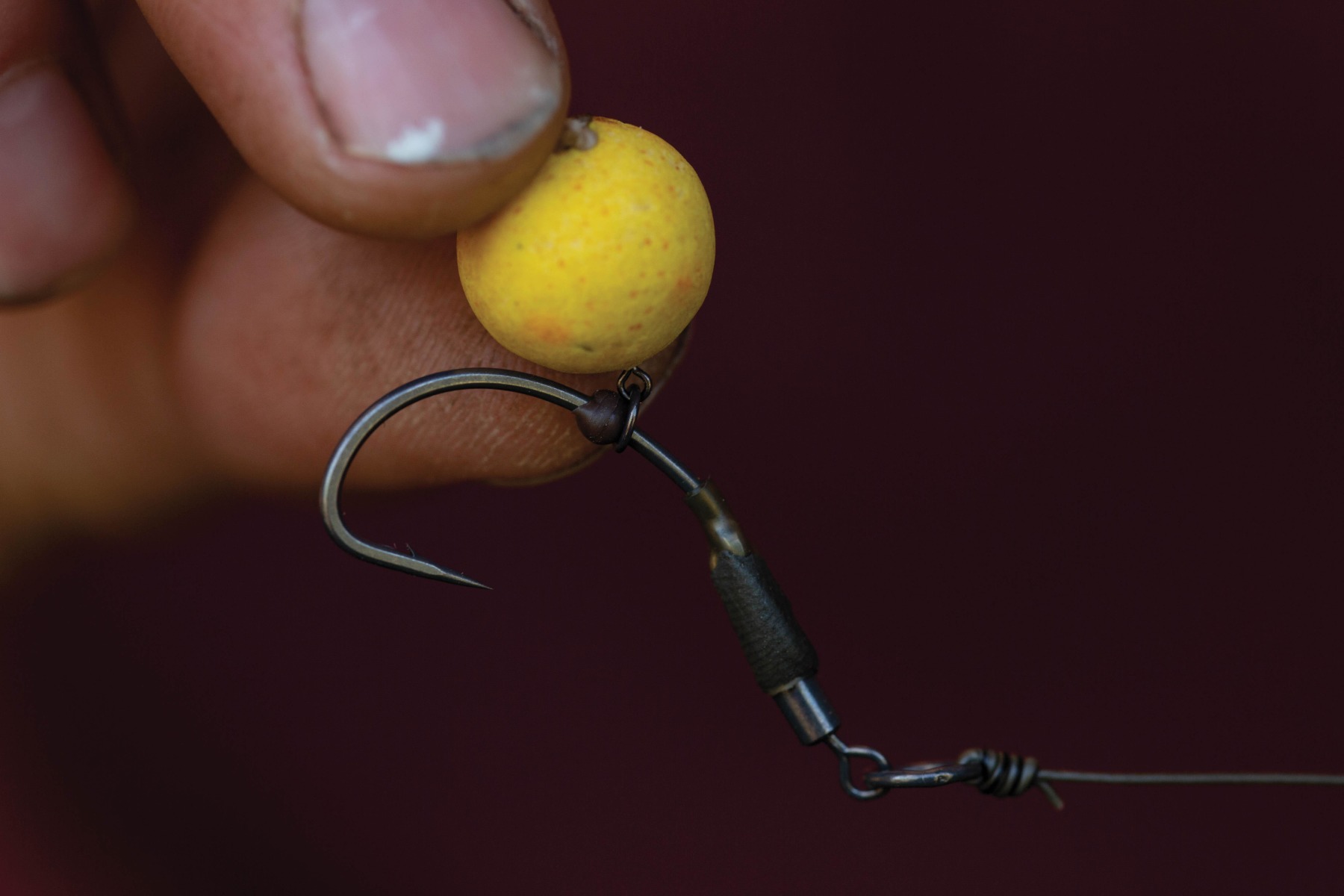
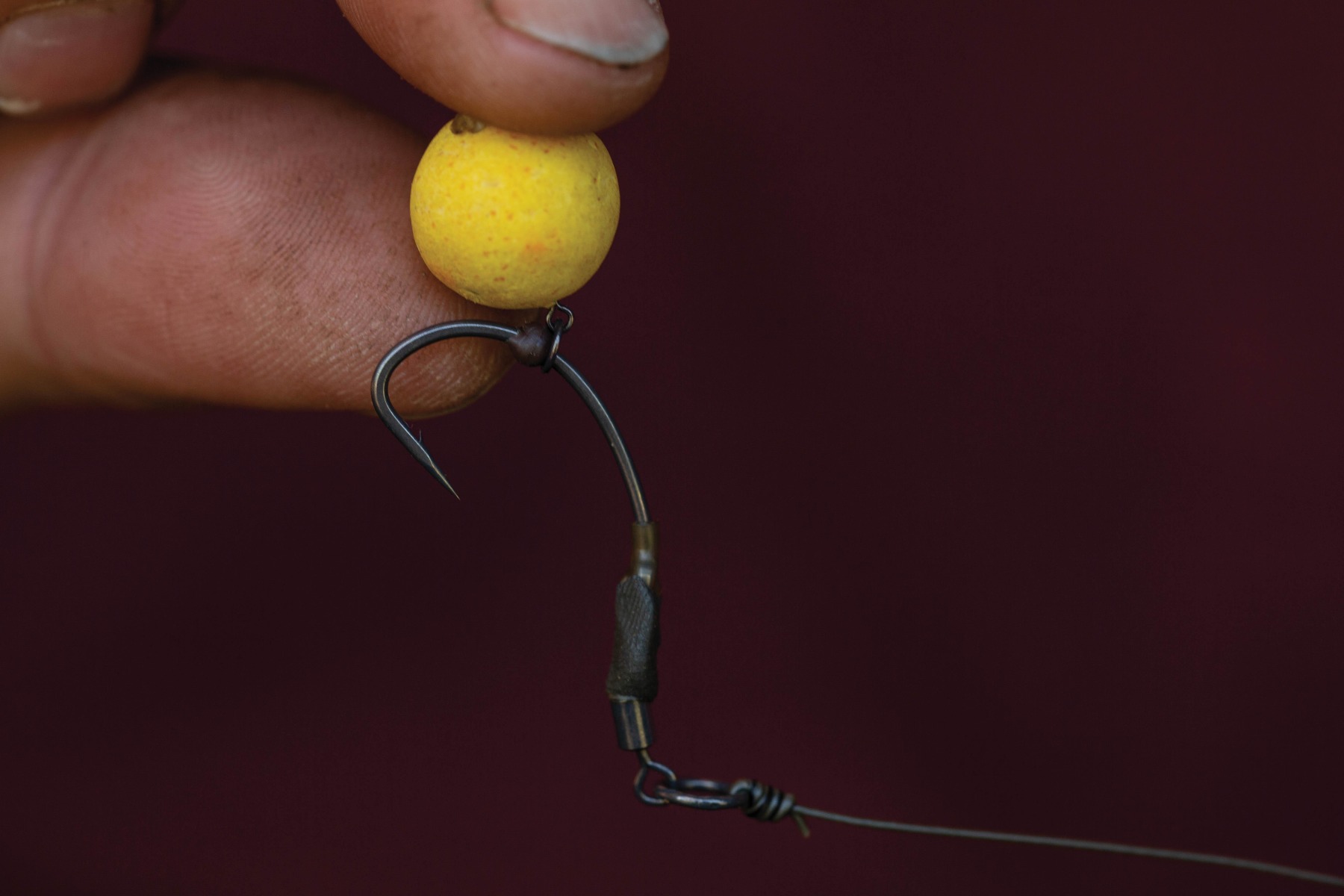
HOOKLINK MATERIALS
Booms and hooklinks should, as in all angling scenarios, be dictated by the nature of the lakebed, presence of weed, and linked to that, the lead arrangement you choose for that specific situation. *You know the drill by now: long or soft hooklinks on lead clips, and short mono/fluorocarbon hooklinks on Helicopter arrangements.
Just as with Hinged Stiff Rigs, I think there are also benefits for having the Ronnie on a loop to allow greater movement, which is a particularly important consideration, and one that’s often overlooked—especially with big fish. Mounting the hook on a quick link swivel—without the redundant ring—makes for a lovely clean, clutter-free presentation with plenty of movement. As a good starting point, I’d suggest sticking with your favourite-sized loop. If you haven’t used looped rigs either, then I suggest 10mm as a good starting point length-wise. Smaller loops seem to look more balanced with the a low pop-up, but if you like big loops, try them anyway—as they say, there’s more than one way to skin a cat!There seems to be a couple of distinct schools of thought regarding the positioning of the counterbalancing putty: on the hook itself, or on the hooklink side of the swivel. It’s one of those minor details which I could claim to be right or wrong. In reality, it is down to personal choice, and I genuinely do not think it makes that much difference!
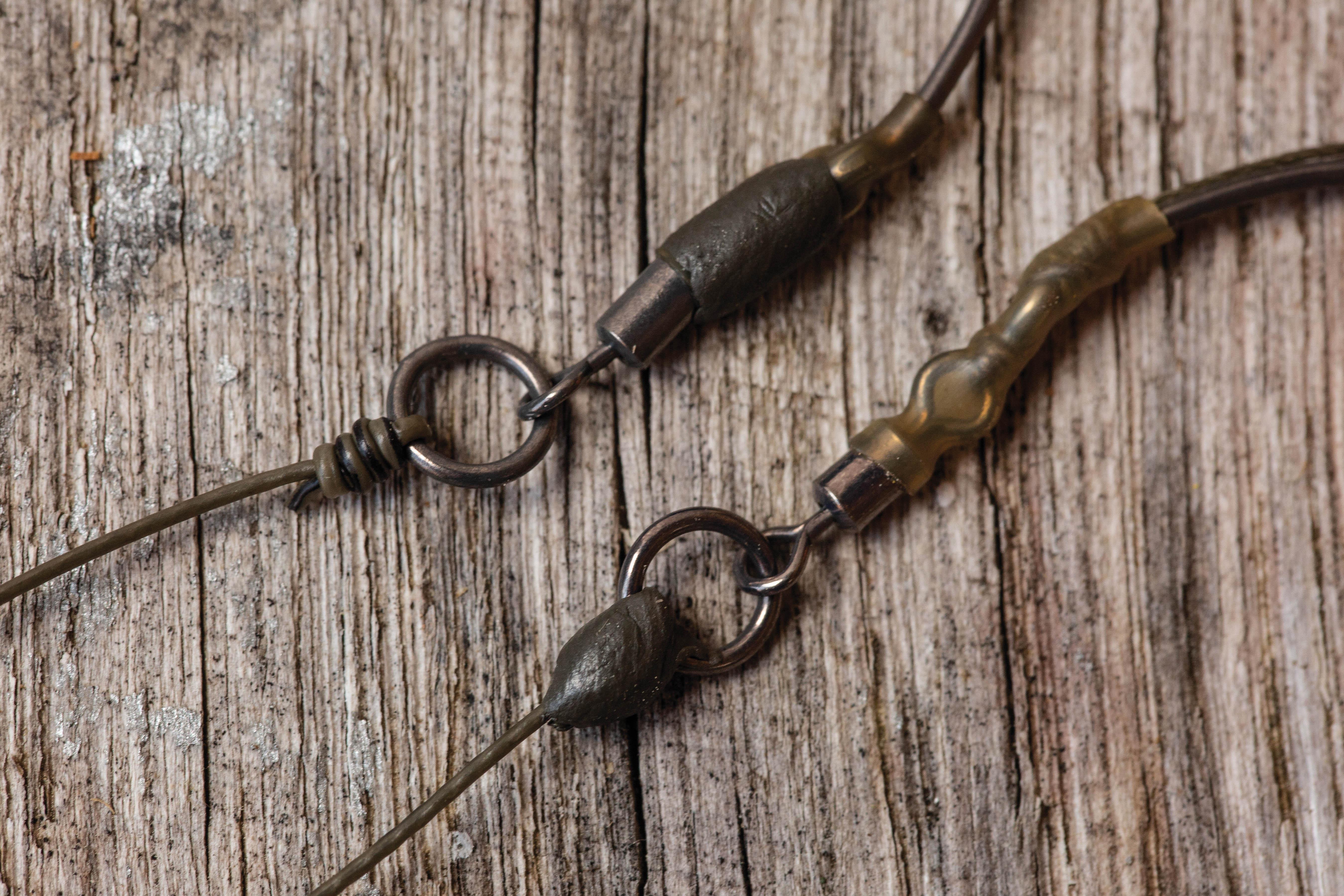
The only real difference is the finite height of the hookbait. If the rig putty is molded around the shrink tube, the hook will naturally settle a couple of millimetres lower than it would do with the counterweight the other side of the ringed quick link swivel. Theoretically, the latter arrangement could provide a slight advantage when it comes to fishing over particularly dirty spots, where having that little increase in height might help, but in all honesty, if it’s that bad, then a higher pop-up presentation may actually be a better alternative.
Having fished Ronnie Rigs for so long, and having used them so much over the years, I have already gone through my ‘bored with this rig’ stage. After briefly flirting with all sorts, I now find myself back on the Ronnie, and it’s performing absolutely perfectly. Yes, it’s a hugely popular rig, but there is a very good reason for that: it’s bloody awesome!
